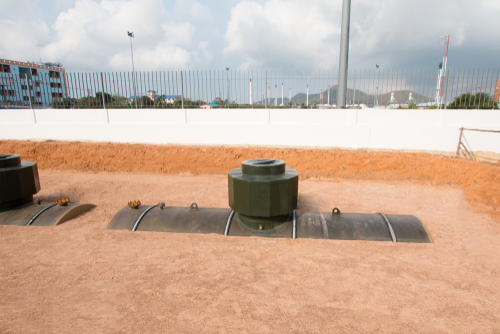The underground water tank is a vital resource as the storage and conservation of water becomes more of a concern. While underground water tanks are conveniently placed, they can become overlooked and under-considered. Constant maintenance is the key to keeping your tank at its best and avoiding adverse outcomes after long periods. This may also be cost-saving in the long-run, as you would not have to replace your tank.
Maintaining your underground water tank will require such actions as:
Regular Inspections
Having your tank inspected regularly is the most effective way to catch any problems that might have arisen, and to do so early. Early detection that leads to prompt action helps to avert disastrous outcomes.
Inspections cover a wide range of considerations. The process helps to spot leaks, detect rust or compromised foundations, and to identify unwanted growths.
Leaks are particularly troublesome as they cause an increase in the consumption of water, some of which goes to waste through the leak. The point at which the leak occurs can also act as an entry point for microorganisms which get into the water and cause contamination, making it unsafe for consumption.
Cleaning
Your underground water tank must also be cleaned within reasonable time frames. A schedule can be set out, which will ensure that the tank is cleaned often enough to maintain a safe and clean environment without being too excessive and cumbersome. This deep cleaning should be undertaken by a professional for best results.
Keep Algae Out
One of the main concerns with the installation of an underground water tank is the growth of algae within the tank. The interior of the tank can be a damp and humid place filled with water, and as long as the conditions are favourable, algae will grow and thrive in the tank. The simplest solution to this problem is to certify that it is dark enough within the tank that no sunlight can filter through. The elimination of light discourages growth as the primary mechanism that enables photosynthesis is eliminated. Alternatively, if permitted, you can employ the use of chlorine or bleach mixed into the water in minimal amounts to discourage the growth of algae.
Maintaining Equipment
Any equipment that is attached to the tank must also be kept in optimum condition. This includes the piping and pumps that are used to draw water into the home. Pipes must be inspected for leaks or failing seals while the pump must have all mechanical components well cared for and replaced regularly.
Technological Maintenance
Technology is continuously making fast and frequent changes. The technology associated with underground tanks is not an exception. There are many advances made toward the improvement of the use of tanks, including materials used in lining the inner parts of the tank to maintain water cleanliness. Some sensors can be installed in the tank to aid in the monitoring of water levels and the detection of pressure changes. These, are just some examples of the strides being made in enhancing the ease and efficiency of tank maintenance. Maintenance of your underground tanks is essential if you aim to keep costs low and to avoid serious problems that could arise from the neglect of your underground water tank. It is, therefore,imperative that you undertake the process regularly and thoroughly.
Read Also:
